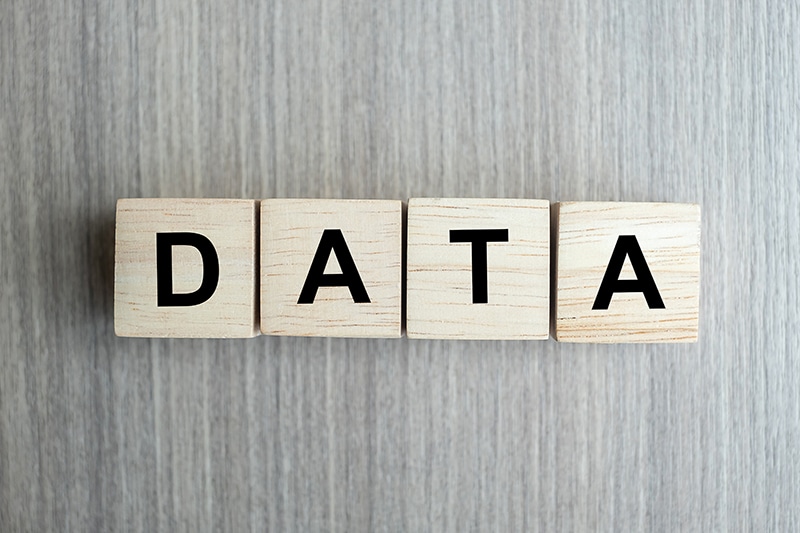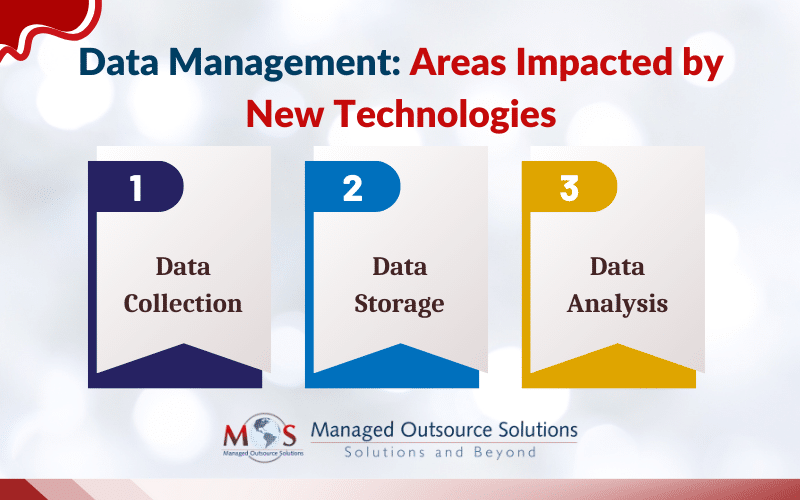Investing in technology to obtain business insights is a necessity for succeeding in this digital era. While organizations accumulate massive volumes of data on a daily basis, what matters is how they harness this information. In the ever-evolving landscape of technology, artificial intelligence and machine learning (AI/ML) algorithms are playing pivotal roles in data collecting and processing. These technological advancements supported by business process outsourcing solutions are helping to improve productivity and transforming the way businesses operate.
New Technologies Transforming Data Management
Data Collection
The vast amounts of data that modern businesses generate includes structured data, such as sales figures, customer interactions and operational metrics, as well as unstructured data from social media, sensors, and transactional systems. Technology has improved the speed and efficiency of real-time data collection from diverse sources into a unified platform.
Digital devices such as mobile phones, tablets, or laptops and the Internet of Things (IoT) devices such as smart appliances, wearable fitness trackers and remote meteorological sensors gather massive amounts of data in real time. Business applications, websites and mobile apps have built-in automated data collection capabilities, while sensors collect operational data from industrial equipment, vehicles and other systems. Social media monitoring allows businesses to extract information from channels such as Facebook, Instagram, Twitter, Google Plus, and so on.
Data Storage
Technology plays a crucial role in improving data storage. Any amount of data can be stored in a cloud storage system. Businesses can increase or decrease their storage capacity based on the data they collect. Storage as a Service (STaaS) involves using public cloud storage resources to store data. STaaS makes it possible to rent terabytes or more of storage with just a few clicks. It is a cost-efficient option for multimedia storage, data repositories, data backup and recovery, and disaster recovery. By leveraging data storage infrastructure and technology provided by a third-party, businesses can scale up storage resources without investing in new hardware or incurring configuration costs.
According to storvix.eu, companies will increasingly adopt hybrid cloud solutions for different purposes. This practice involves retaining critical systems on private clouds or on-premises infrastructure, while leveraging public clouds for business operations and customer services.
Data Analysis
To harness the power of the information they collect and make data-driven decisions, organizations need to analyze data. In the traditional method, data analysts go through the data, provide potential insights, test them, and report on their findings.
On the other hand, ML-based models need no human input. They constantly scrutinize data, identify anomalies, and notify users in real-time. ML models can examine any data subset and accurately determine correlations between millions of data points. In augmented analytics, ML-powered data analytics platforms automate many traditional data analytics tasks, interpreting even unstructured data such as phone calls.
Augmented analytics is finding application across many industries. For instance, using augmented analytics in retail can help store managers understand customer behavior and preferences and optimize marketing campaigns. This translates to improved customer satisfaction, increased brand loyalty, and ultimately, increased revenue.
How to Optimize Data Analysis
Although many companies are adopting various technologies to process data, there many that haven’t yet joined the data revolution. To thrive in the competitive world, small, medium and large size companies need to know how to make the best use of their data.
Here are some strategies to analyze data effectively:
- Establish the purpose and key goals of your data analysis.
- Determine the data analytics methodology appropriate for your needs.
- Based on factors like budgetary and schedule needs, develop a plan to gather the data.
- Set up the necessary data collection processes.
- Cleanse the data using appropriate tools to ensure it’s accurate and free of errors.
- Evaluate and visualize the information to understand and present it in a meaningful way.
- Analyze the data using the appropriate method to deduce insights and actionable information. There are different data analysis methods such as data mining or text analysis, statistical analysis, descriptive analysis, diagnostic analysis, predictive analysis, and prescriptive analysis.
AI powered automation has revolutionized data extraction and document processing. Partnering with an experienced business processing outsourcing company can help you leverage advanced technologies to automate the extraction, analysis and understanding of data. Leading service providers utilize a diverse range of advanced tools and platforms and empower their clients to optimize data collection and management.
Considering Business Process Outsourcing (BPO) solutions for data management?





